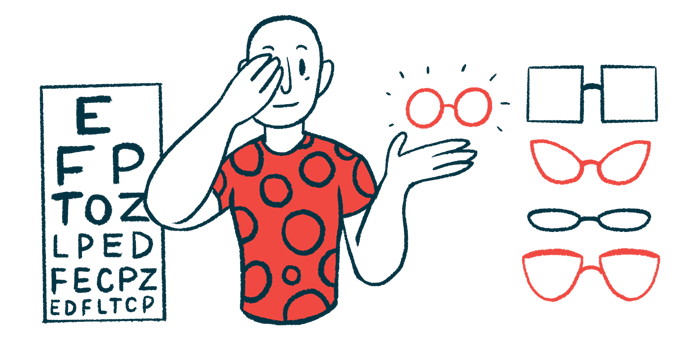Treatment for approximately one year with Batten-1 (miglustat) — an experimental oral small molecule developed by Theranexus — in individuals with juvenile Batten disease, also known as CLN3 disease, resulted in significantly slower vision loss compared with untreated patients, according to new data from a real-world study.
The findings align with those from an open-label Phase 1/2 clinical study (NCT05174039), sponsored by the Beyond Batten Disease Foundation, which was followed by an expanded access program that allowed patients to continue using the medication. After about two years, Batten-1 had helped preserve visual acuity, those results showed.
The real-world study compared 11 patients treated with Batten-1 in routine clinical settings to 22 untreated patients, using data gathered from natural history studies, family interviews, and medical records.
“We are deeply grateful to the patients, their families, and the healthcare providers who made this important analysis possible by agreeing to share their experiences and those unique clinical data,” Craig Benson, the foundation’s chairman, said in a press release from Theranexus that detailed the findings.
“This collaboration has been essential in demonstrating Batten-1 potential to change the course of CLN3 disease,” Benson said.
Juvenile Batten disease is caused by mutations in the CLN3 gene, which encodes battenin, a protein involved in recycling molecules within cells. When battenin is missing or faulty, fatty molecules build up in lysosomes, the cell’s recycling centers. Nerve cells are especially vulnerable to this toxic buildup, which leads to the disease’s symptoms.
Batten-1 works by inhibiting an enzyme called glucosylceramide synthase, which is involved in the production of certain fatty molecules. By blocking this enzyme, Batten-1 is expected to reduce the toxic buildup of fatty molecules in nerve cells, potentially helping to ease or prevent symptoms of juvenile Batten disease.
Phase 3 study now planned to test therapy in juvenile Batten disease
In the earlier Phase 1/2 clinical study, six adults and adolescents were treated for as long as about two years with Batten-1 as oral capsules at a maximum daily dose of 600 mg. In addition to preserving visual acuity, Batten-1 also prevented worsening of motor symptoms, data showed. Batten-1 was well tolerated and there were no observed serious side effects.
After reviewing the data, regulators in both the U.S. and the European Union approved the design of a Phase 3 clinical study that will test an oral solution of Batten-1 against a placebo. It will enroll an estimated 60 children and adolescents with juvenile Batten disease.
In the real-world study, the main endpoint was assessing changes in visual acuity or a person’s ability to recognize fine details. This was estimated using a logMAR chart consisting of rows of increasingly smaller letters. On this chart, a lower score means better vision. This is the same endpoint as that selected for the planned Phase 3 clinical study.
Achieving near stabilization of visual acuity over 12 months in CLN3 patients is truly remarkable and unprecedented. … These results offer real hope for altering the natural progression of the disease.
Only patients who started with some measurable vision — a LogMAR score of 1.9 or less — were tested, and were followed for one year. To ensure a fair comparison, the researchers used propensity score matching, a statistical method that accounts for differences, such as age or disease severity, between groups.
Patients treated with Batten-1 maintained better visual acuity than untreated patients, with differences that were both statistically significant and clinically meaningful, according to Theranexus.
“These findings strongly support our development strategy and reinforce the relevance of our endpoint in demonstrating Batten-1 potential efficacy,” said Marie Sebille, MD, Theranexus’ chief medical officer.
For Gary Clark, MD, who’s been involved in testing Batten-1 at the Baylor College of Medicine in Houston, “achieving near stabilization of visual acuity over 12 months in CLN3 patients is truly remarkable and unprecedented. In this population, we would typically expect a relentless decline in vision. These results offer real hope for altering the natural progression of the disease.”
